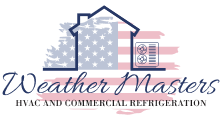When we hire an air duct cleaning service, we want to know the job will be done safely and correctly. The right certifications show that a company follows proper cleaning standards and understands how to protect indoor air quality. Choosing a certified air duct cleaning service helps ensure cleaner air, better system performance, and fewer health risks in our homes or workplaces.

It’s easy to overlook these details when comparing prices or scheduling appointments, but certifications tell us a lot about a company’s training and professionalism. They show that technicians meet industry standards and follow current regulations. Knowing what to look for can save us time, money, and frustration later.
As we explore the most important certifications, we’ll see how they connect to service quality and long-term air health. Understanding these credentials gives us confidence that we’re choosing a service that values safety, skill, and accountability.
Core Certifications to Seek in Air Duct Cleaning Services
We look for credentials that confirm skill, safety, and compliance with industry standards. Recognized certifications show that technicians follow tested cleaning methods, understand HVAC systems, and meet professional ethics and training requirements.
NADCA Certification and Its Importance
The National Air Duct Cleaners Association (NADCA) sets the main standards for air duct cleaning. A NADCA certification means the company follows strict guidelines for cleaning, inspection, and maintenance of HVAC systems.
We trust NADCA-certified professionals because they must pass exams, maintain continuing education, and follow a code of ethics. This ensures consistent quality and accountability.
NADCA certification also requires proper equipment use and adherence to the Assessment, Cleaning, and Restoration (ACR) Standard. This standard defines how to inspect and clean ducts safely and effectively.
When a company holds NADCA certification, we know they understand airflow, contamination control, and system restoration. This helps reduce dust buildup and improves air handling performance.
IICRC Certification for Duct Cleaning Professionals
The Institute of Inspection, Cleaning and Restoration Certification (IICRC) provides training for cleaning and restoration work, including air duct cleaning. An IICRC-certified technician has learned how to handle contamination, moisture, and microbial growth inside HVAC systems.
We value IICRC certification because it focuses on practical cleaning methods and health-based standards. It also covers safety protocols that protect both workers and building occupants.
IICRC-certified duct cleaning professionals follow specific procedures for cleaning coils, registers, and vents. They also document their work clearly, which helps verify that the job meets recognized standards.
This certification shows a commitment to proper cleaning science rather than guesswork. It reassures us that the technician understands how to restore air quality and system efficiency responsibly.
Air Systems Cleaning Specialist (ASCS) Credential
The Air Systems Cleaning Specialist (ASCS) credential, offered by NADCA, focuses on the technical side of duct cleaning. It tests knowledge of HVAC design, contamination control, and cleaning techniques.
We rely on ASCS-certified specialists because they understand how to assess complex systems and choose the right cleaning approach. They can identify system issues that affect airflow or energy use.
To earn the ASCS credential, candidates must pass a detailed exam and stay current with NADCA standards. This ensures they apply up-to-date methods and maintain professional conduct.
An ASCS professional can explain each step of the cleaning process clearly and provide documentation that supports compliance with industry standards.
Certified Ventilation Inspector (CVI) and Other Specialized Certifications
The Certified Ventilation Inspector (CVI) credential, also from NADCA, focuses on inspection rather than cleaning. It trains professionals to evaluate system conditions, identify contamination sources, and recommend corrective actions.
We consider CVI certification important when assessing older or complex ventilation systems. A CVI-certified inspector can detect hidden issues that affect air quality and system performance.
Other specialized certifications may include training in HVAC hygiene, energy efficiency, or mold remediation. These add value when dealing with specific building needs or health concerns.
A company that employs CVI or other certified specialists shows a deeper understanding of system evaluation and maintenance. This level of expertise supports accurate inspections and reliable service outcomes.
Industry Standards and Regulatory Guidelines
We follow established standards and government recommendations to ensure safe and effective HVAC system cleaning. These rules help us maintain proper cleaning methods, protect indoor air quality, and meet local legal requirements for air duct cleaning companies.
NADCA ACR Standard for HVAC System Cleaning
The NADCA ACR Standard sets the main guidelines for professional HVAC system cleaning. It defines how to inspect, clean, and restore air ducts to maintain system efficiency and air quality.
We use this standard to decide when cleaning is needed and how to handle different materials inside ducts. It also explains how to document each step of the process, including before-and-after photos and service reports.
Key parts of the ACR Standard include:
- Assessment procedures for identifying contamination and system condition.
- Cleaning methods using mechanical agitation and vacuum collection.
- Verification that no visible debris or dust remains after cleaning.
Following NADCA’s standard helps us ensure consistent results and meet customer expectations for quality and safety.
Environmental Protection Agency Recommendations
The Environmental Protection Agency (EPA) provides important guidance on when and how to clean air ducts. The agency does not certify cleaners but offers clear recommendations to protect indoor air quality and reduce unnecessary cleaning.
The EPA advises cleaning only when there is visible mold, pest infestation, or heavy dust buildup inside HVAC systems. We follow these guidelines to avoid unnecessary work and to focus on proven conditions that affect air quality.
We also use EPA-registered disinfectants when cleaning contaminated systems. These products meet safety and environmental standards for use in occupied buildings.
By applying EPA recommendations, we keep our cleaning practices safe, responsible, and based on verified environmental research.
Local Licensing and Compliance Requirements
Each state or city may require specific licenses or permits for air duct cleaning companies. We make sure our technicians meet these local standards before performing any HVAC system cleaning.
Licensing often includes background checks, insurance verification, and proof of technical training. Some areas also require registration with local environmental or health agencies.
We maintain proper records of our compliance, including copies of licenses and certifications. This helps ensure accountability and shows our commitment to lawful and professional service.
| Requirement Type | Example | Purpose |
|---|---|---|
| Business License | State-issued permit | Legal operation |
| Technician Certification | HVAC cleaning training | Skill verification |
| Insurance Coverage | Liability policy | Customer protection |
Impact of Certification on Service Quality and Indoor Air Health
Certified air duct cleaners follow verified methods that improve air quality, protect HVAC systems, and ensure safe work practices. These standards help us maintain healthy indoor environments while extending the life and performance of our equipment.
Improving Indoor Air Quality Through Certified Cleaning
When we hire certified technicians, we know they use approved tools and follow strict cleaning protocols. This process removes dust, mold, pollen, and other airborne particles that can circulate through vents.
Certified cleaners often use HEPA-filter vacuums and negative air machines to trap fine debris instead of releasing it back into the air. They also inspect ducts for leaks or moisture that can promote mold growth.
We can expect measurable improvements in indoor air quality (IAQ) after certified cleaning. Cleaner ducts reduce allergens and odors, which helps people with asthma or allergies breathe easier. Certification ensures that the work meets recognized standards such as NADCA’s ACR Standard, giving us confidence that the cleaning was done thoroughly and correctly.
Enhancing HVAC Efficiency and Longevity
Certified cleaning directly supports HVAC efficiency by removing buildup that restricts airflow. When ducts are clear, air moves more freely, and the system doesn’t have to work as hard to heat or cool our space.
This reduced strain can lower energy consumption and extend the life of key components such as fans, coils, and filters. Certified professionals also check for blockages or damaged insulation that may cause uneven airflow.
We benefit from consistent temperatures, lower utility costs, and fewer breakdowns. Certification programs teach technicians how to identify early signs of wear, helping us schedule maintenance before small issues turn into expensive repairs.
Safety Procedures and Proper Cleaning Techniques
Certified air duct cleaners follow strict safety procedures to protect both workers and building occupants. They use protective gear, isolate work areas, and handle debris disposal according to health and environmental guidelines.
Proper cleaning techniques include brushing, vacuuming, and sanitizing ducts without damaging delicate HVAC components. Certified technicians know which tools and cleaning agents are safe for different materials.
They also follow safety standards that reduce the risk of cross-contamination or chemical exposure. By following these verified methods, we ensure a clean, safe, and compliant HVAC cleaning process that protects our property and health.




